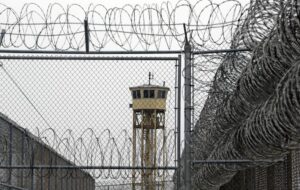Harm and Punishment…and harm

There is a difference between punishing someone for doing harm and harming them in the punishment.
I don’t mean the Hammurabian “eye for an eye” kind of punishment, which obviously inflicts grievous harm—and is meant to. Or any of the punishments humans have invented to kill other humans: burning at the stake, crucifixion, impalement, beheading, drowning, hanging, defenestrating. The list, unfortunately, is much longer than this. And more grisly.
No, I mean the punishment we dole out today to those who do harm. We, the United States, a rational, post-Enlightenment culture with a heritage of social norms, ethical values and empirical beliefs systems. We, the United States, a country believed to be, by more than 50 percent of its citizens, “the greatest country on earth.”
We punish people by removing them from society, from their communities and their families, by taking away their freedom. This is certainly humane compared to slicing off their head or throwing them out a window (that’s what defenestration is). But we don’t just sequester them from society so that they can do no further harm. We put them in cages. We depersonalize them. We take away their ability to make meaningful (or really any) decisions. We create an environment that breeds and reenforces violence and distrust. We create a dangerous, toxic, sealed-off world that, over time, traumatizes. That scars the soul.
The punishment itself, the caging and deprivation, is not designed to rehabilitate. It is designed to inflict harm.
Okay, you say, these people DID harm, Let’s do harm back to them. But here’s the thing: If the punishment creates emotionally and psychologically damaged people who have become accustomed to being treated as sub-human and have come to think of themselves as such, what exactly are we accomplishing? If hyper-alertness, distrust and helplessness become the stuff of everyday life, how is this punishment helping to create people we want to see back in our communities?
Ninety-five percent of those we incarcerate are eventually released. What harm has been done to them during those years—often decades—they spent inside? What if the punishment causes lasting harm, not just for the individual but for all of us?
When you read the reentry stories in Free: Two Years, Six Lives and the Long Journey Home you will see what it takes to transform the trauma of long-time incarceration into a well-lived life.






1 comment
Absolutely. We do not help people to re-enter society.
Leave a Comment